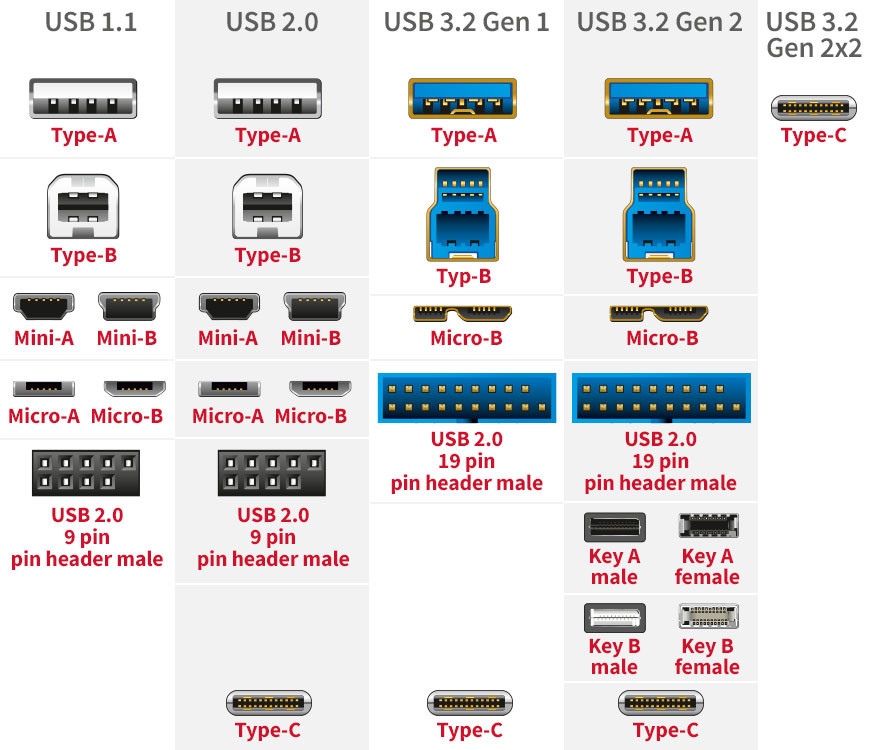

These extra connections allow more data bandwidth, but also allow for signals to be sent and received simultaneously. This is due to four extra connector wires inside a USB cable. 3.0 can reach speeds over ten times faster at 4.8 Gbit/s. USB 2.0 ports are only able to reach a 480 Mbps transfer rate even over short, efficient connector wires. USB 3.0 is an advanced form of USB 2.0 with a faster transfer rate. On desktops, you can identify a type-A USB port, the traditional rectangle USB port shape, by its color. The original line of USB 1.0 ports is hard to find, but USB 2.0 and USB 3.0 are found nearly everywhere. Like any technology, the USB design has not stood still. Where there’s a specialized piece of equipment, there’s usually a USB connection to manage it through a computer interface. Every industry in the known world has found innumerable uses for USB connections. Of course, the amount devices made to be used with a computer has grown immensely since the concept was first introduced. They are most frequently used in 2021 as charging cables for smartphones and tablets, but their primary purpose is for data transfer between computers, smartphones, and tablets to accessories like controllers, keyboards, printers, and scanners. USB refers both to the USB ports and cables with USB connectors. The Universal Serial Bus (USB) was developed as a standard to define communication protocols between computers and electronic devices. The USB was created to make data transfer easier among devices.

With extra connections, the 3.0 allows more data bandwidth and for signals to be sent and received simultaneously.The rates are 480 Mbps versus 4.8 Gbit/s.USB 2.0 transfer rate capability was advanced with the 3.0 update.


 0 kommentar(er)
0 kommentar(er)
